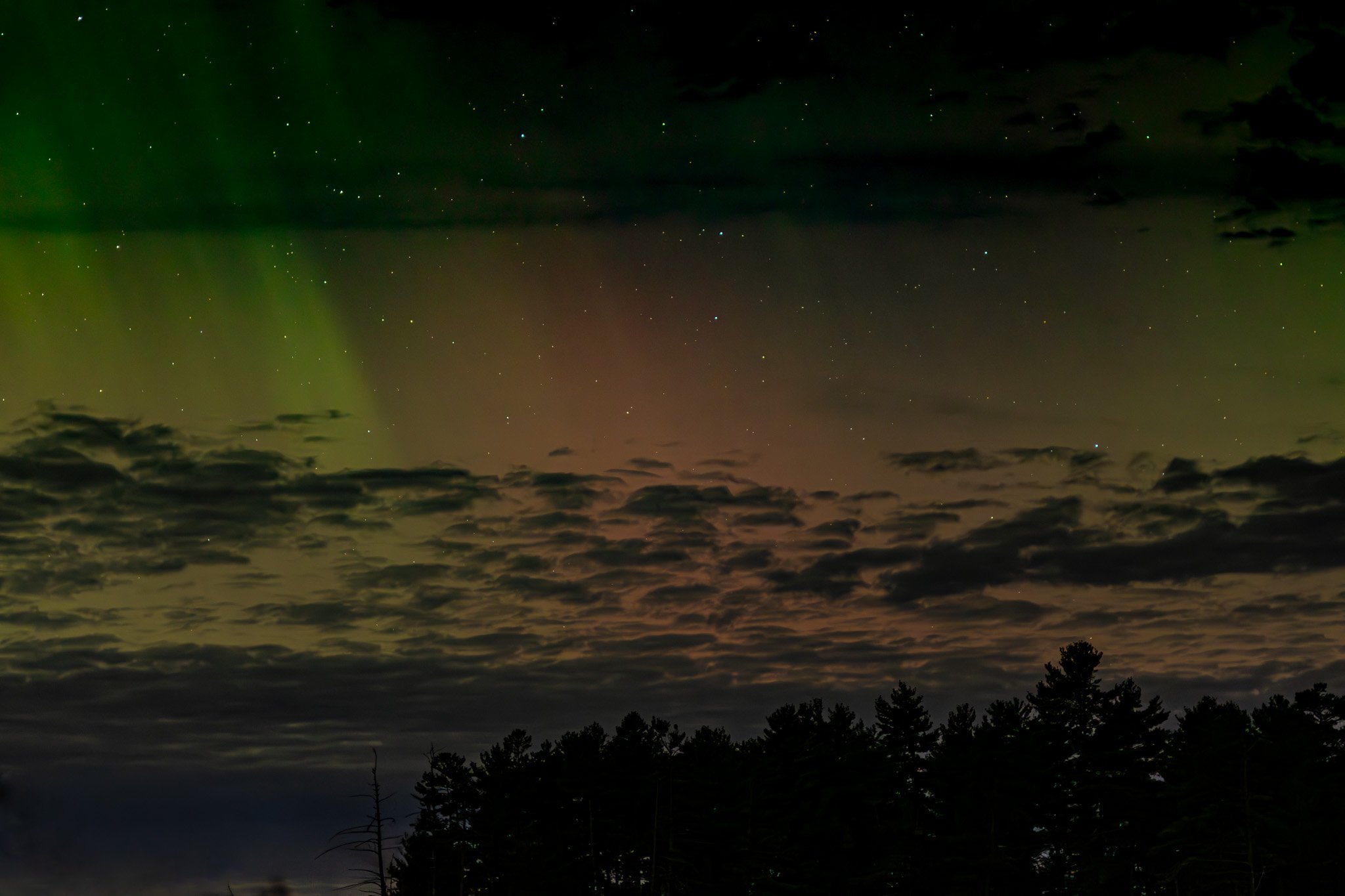How to photograph auroras
The easy way
Most modern smartphones will have a night mode that will automatically do a decent job of an aurora picture, in a particular style. They tend to be vivid in colour, and not much like the real thing you experience. It will get you an impressive photo, albeit one that’s a lot like everyone else’s photo.
You will put your camera into night node, point it at the sky, and try to hold it as steady as possible.
Here is a short guide on camera settings that opens up interesting possibilities for you to bring a bit more detail and even artistry to your photo, like this one.
An aurora seen from a lake in Algonquin Park, Ontario, Canada. Clouds are clearly visible, and the shoreline and trees are visible across the lake.
Set up
Use a tripod to keep the camera as steady as possible
Use a delay of at least 2 seconds between pressing the shutter and the photo to let camera vibrations dampen down. A bit longer (5s to 10s) is even better.
A wider angle lens will show more of the sky and terrain.
A "faster" (lower f-stop) lens will let in more light. Otherwise, pick the one that gets as close to the framing of the sky and surroundings you want. You can crop your photo as you post-process of course.
Camera Settings
f-stop wide open... as low as you can go. This will let in the maximum light.
manual focus - put the camera in manual focus mode. Take a picture, zoom in on a star, adjust focus until it's as pin-point as you can make it
ISO - 1600 to max of 6400. The higher you go, the more likely you'll have noise in the dark areas of the photo. See below for a scenario you might reduce ISO.
shutter speed/ exposure - will really depend on the above, and what you are aiming for. The longer the shutter speed, the brighter the aurora will be, but there's a sweet spot if you want to show stars along with the aurora, which is very pleasing to look at, try around 3 to 5 seconds.
If you want as much bright colour as possible, use the following rule:
500 (full) or 300 (APS-C aka. crop) / focal length = max exposure time without star trails due to the earth’s rotation
For example, an APS-C camera with a 24mm lens would allow 300/24 = 12.5 seconds before stars trail
The same lens on a full frame camera would not show star trails until 500/24 = ~20 seconds, which will show more stars, and celestial objects
Depending on the lens, you may find a 10+ second exposure is too bright and blows everything out. You can adjust by reducing ISO which has the advantage of reducing noise.
Have fun! And best of luck!!


